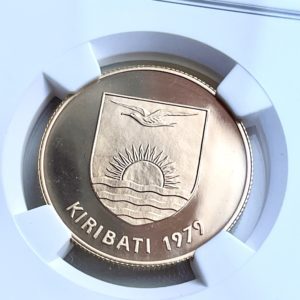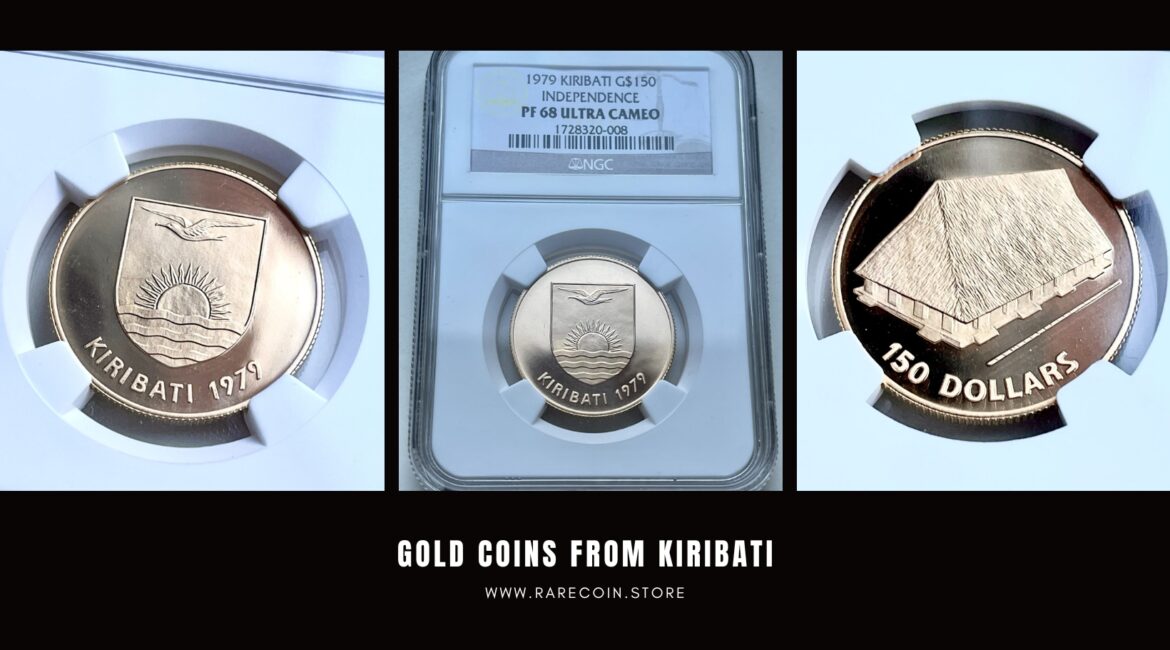Kiribati gold collector coins enjoy great popularity among coin enthusiasts and collectors worldwide. These exquisite coins showcase Kiribati’s rich cultural heritage and natural beauty, making them highly sought after in the numismatic community.
Kiribati gold coin designs often feature significant symbols and motifs depicting the country’s history, traditions and landmarks. From images of native flora and fauna to depictions of historical events or famous personalities, each coin tells a compelling story.
Made with great attention to detail, these collectible coins are minted using the finest quality gold, which guarantees their value and lasting beauty. The purity and weight of the gold used for these coins are carefully measured and certified, so collectors can be assured that the coins are genuine and have a high precious metal content.
Due to their limited mintage and exquisite craftsmanship, Kiribati gold collectible coins are highly prized and sought after by collectors around the world. They are often considered a prized possession and valuable addition to any coin collection. Whether it’s the allure of owning a piece of Kiribati’s rich cultural heritage or the appreciation of fine art and craftsmanship, these gold collector coins from Kiribati capture the hearts of numismatists and investors alike.
Proof of their worldwide appeal is that Kiribati gold collector coins are traded and displayed at coin shows, auctions and special numismatic events around the world. Their rarity and desirability make them not only a sought-after collectible, but also a valuable investment opportunity for those who recognize their potential. With their captivating design, value and worldwide recognition, Kiribati gold coins continue to enchant collectors, making them prized possessions that celebrate the beauty and heritage of Kiribati.
Let’s take a look at some interesting facts about the country of Kiribati
In 1979 Kiribati gained its independence and became the 41st member of the Commonwealth of Nations. Member of the Commonwealth of Nations. The country is located in Oceania and has an area of 811 km², covering about 3.5 million km² of the central Pacific Ocean. Kiribati consists of three island groups, the Line Islands, the Phoenix Islands and the Gilbert Islands.
What is the correct pronunciation of Kiribati?
The correct pronunciation of Kiribati is “Kiribas” or “kee-ree-bahss”, where the “ti” sound is pronounced as “s”. Interestingly, this pronunciation is derived from the local language and reflects the country’s former name as Gilbert Islands. The islands were named after Captain Thomas Gilbert, a British explorer who discovered them in 1788. In Kiribati, a citizen is referred to as I-Kiribati, which is pronounced as “ee-kiribas”.
What languages are spoken in Kiribati?
Recognized languages in Kiribati include English and Gilbertese. Gilbertese, also referred to as Kiribati, is the predominant Austronesian language spoken by the majority of the population.
Kiribati population
Kiribati has a relatively small population, making it one of the most sparsely populated countries in the world. With a population of about 132,000 (in 2023), population density is low, which fosters a close-knit sense of community among residents.
Capital
Tarawa is an atoll in the central Pacific Ocean and serves as the capital of the Republic of Kiribati. It consists of two main regions: North Tarawa, which has similarities to other islands in the Gilberts group, and South Tarawa, inhabited by 68,086 people in 2023, accounting for half of the country’s total population.
Official currency in Kiribati
The official currency in Kiribati is the Australian dollar. Kiribati has its own coins, but their value is tied directly to the Australian dollar, at a fixed exchange rate of 1:1.
Kiribati economy
The main pillars of the Kiribati economy are fishing, agriculture, copra production, and financial contributions from overseas workers. In addition, international aid plays a critical role in supporting the country’s efforts to achieve its development goals.
Kiribati sports
Sport has always shaped the social and cultural fabric of Kiribati, as well as many other nations. Soccer is the official symbol and national sport of Kiribati.
Popular foods in Kiribati
Kiribati cuisine reflects the island nation’s rich cultural heritage and dependence on local resources. Seafood, especially fish and shellfish, forms an important part of the Kiribati diet. Freshly caught fish, such as tuna and grouper, are often grilled, steamed or baked, often in combination with tasty marinades and seasonings. Coconut, another rich ingredient, is used in various forms, including shredded coconut, coconut milk, and coconut oil, which add a distinct tropical flavor to many dishes.
Root vegetables such as taro, breadfruit and sweet potatoes are staples in Kiribati. These versatile ingredients are often boiled, baked or pureed and served as a side dish or in traditional stews and curries. Breadfruit is also commonly roasted or fried and provides a delicious texture and flavor.
In addition to seafood and vegetables, Kiribati cuisine uses mainly tropical fruits such as bananas, papayas and pineapples. These fruits are enjoyed fresh, used in desserts or mixed into refreshing drinks.Coconut is often used in traditional desserts, made into puddings, cakes or sweet treats.
Overall, Kiribati cuisine is characterized by a harmonious blend of local ingredients, simple cooking techniques and flavors typical of the Pacific Islands. It offers a delicious culinary experience that reflects the cultural identity and natural richness of the Kiribati archipelago.
Kiribati flag
The flag, which was hoisted during Kiribati’s independence on July 12, 1979, was inspired by the coat of arms granted to the islands in 1937. The flag (see the image on the reverse of the coin below) consists of a red upper part with a yellow sun and a representative frigate bird, symbolizing the unique identity of the nation. In the lower part, three blue and three white waves represent the vastness of the Pacific Ocean.
Kiribati independence from the United Kingdom
On July 12, 1979, Kiribati gained independence from the United Kingdom, becoming a self-governing nation. Since then, Kiribati has become a sovereign state and actively participates in the international community. A gold coin was even minted to commemorate it – see the coin below.
Kiribati – Independence – 150 Dollar Proof – 1979 – NGC PF68 Ultra Cameo
This is the 1979 gold coin of Kiribati commemorating its independence. The coin has a face value of $150 and features the country’s coat of arms on the obverse. The reverse of the coin shows a traditional meeting house with the inscription “150 DOLLARS”. The coin was minted by the Royal Mint in London and has a mintage of 386 pieces. It is made of gold with a fineness of .917, weighs 15.98 g and has a diameter of 28.4 mm and a thickness of 1.47 mm. The coin was certified by the NGC and graded with the high value PF68 Ultra Cameo, which indicates its exceptional quality and appearance.
Discover our gold coin collection from Kiribati in the current range here!
-

Kiribati – 1979 – 150 Dollars – Independence – 15.98g – Gold Proof – NGC PF68 Ultra Cameo
1.425,00 €plus shippingDelivery Time: approx. 2-3 days (excluding Saturdays, Sundays and public holidays)





